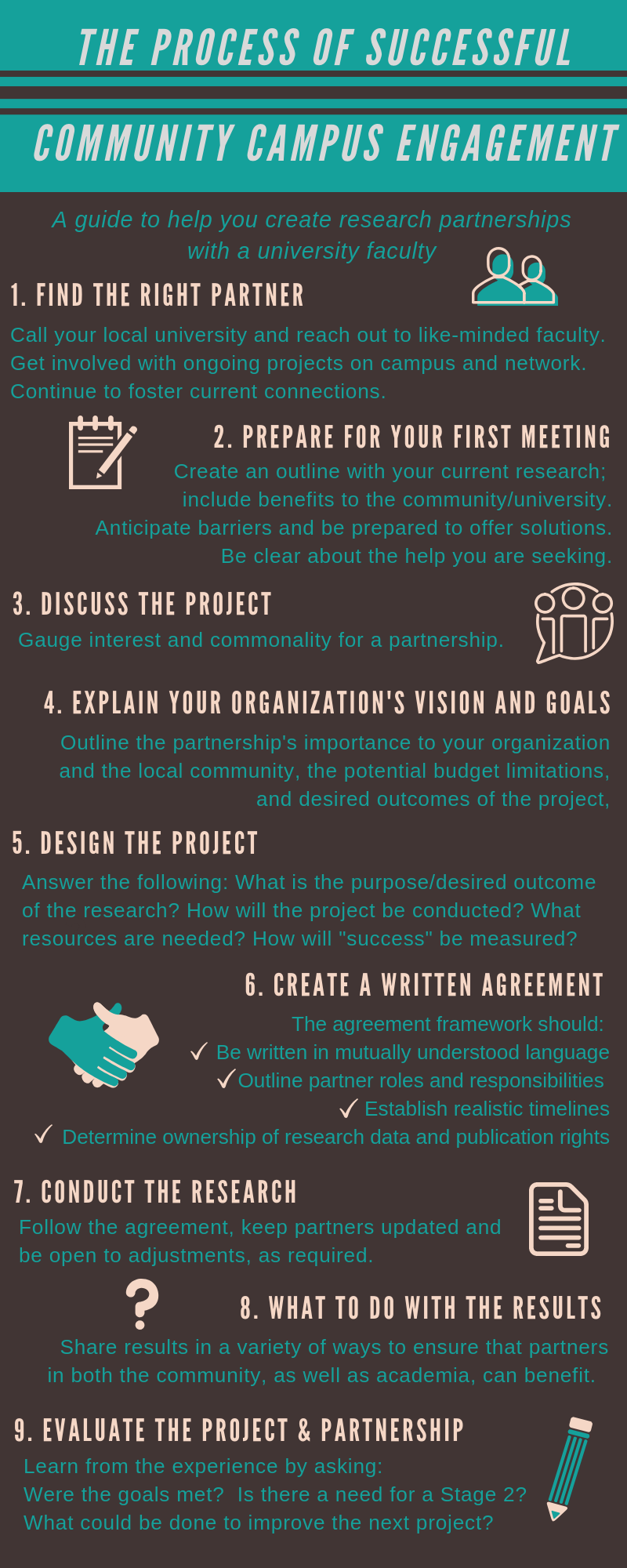In partnership with CFICE, U-Links has developed a manual and the purpose of this document (Click here for the full CFICE – Campus Community Manual PDF or access the FRENCH version here) is to guide community organization staff as they begin to create research-oriented relationships with university faculty. The goal of these relationships is to maximize the effectiveness of the non-profit organization through the creation of evidence-based decision making.
Nonprofit community organizations often have service-related questions but few resources to answer these questions. For example, an organization might want to know whether a specific intervention or program is providing the desired outcome. The lack of unbiased answers to such questions makes it difficult for an organization to make the best, or perhaps most economical, decisions about the future direction of the organization.
University faculty have a need to engage in research to meet the university’s promotion and tenure requirements. More and more often faculty members are seeking projects that will make meaningful contributions to the community in which they live and work. They are seeking opportunities to engage in what is known as Community-Based Research. Faculty are recognizing that the outcome of such projects is more likely to result in change when the question, or problem statement, arises from the community. As such they are seeking research partnerships initiated by community organizations.
Other faculty, while themselves not Community-Based Research practitioners, may be able to support a research project undertaken by their students, whether as course-based projects or as graduate or undergraduate thesis projects.
Some universities and colleges have well-developed departments that engage community organizations in this process and utilize the resulting projects to provide students with real-life experiences in the surrounding community. Others are just beginning to develop the process.
To help you set up your first (or next) community-campus engagement partnership, check out the full manual, or click on the infographic below, which outlines the basic steps you can follow for a successful community-campus engagement partnership.
